To promote its potential and develop sustainably, Cat Ba Island needs the cooperation of the Government , businesses and the community with 8 things to do immediately.
That is the assertion of Mr. Michael van de Watering - leading expert of the Global Consulting Group on climate change adaptation, sea encroachment, maritime and water treatment technology projects Royal HaskoningDHV.
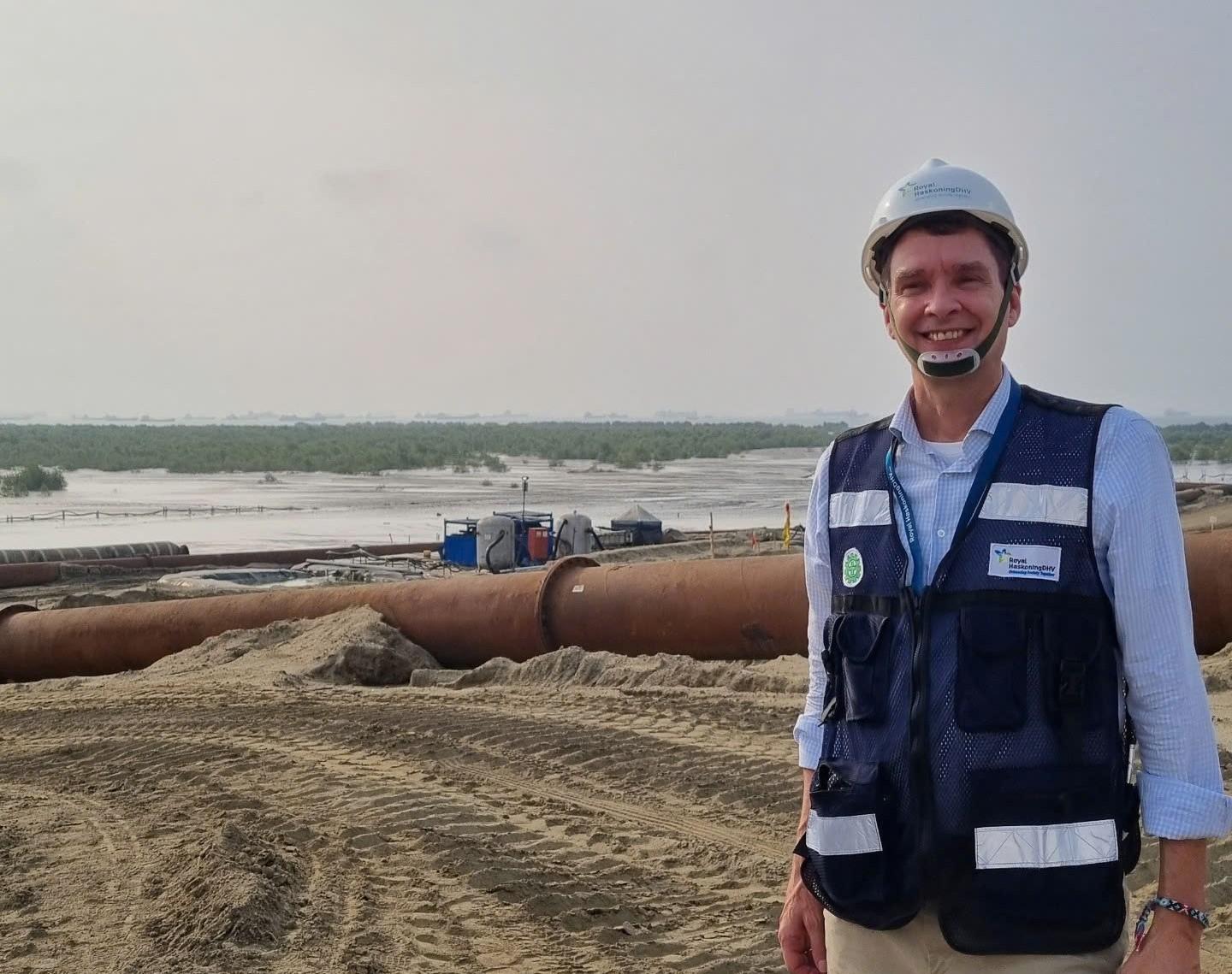
Mr. Michael van de Watering - leading expert of Royal HaskoningDHV.
Cat Ba is known as the "Pearl Island" in the Gulf of Tonkin and is one of the largest biosphere reserves in the world .
These “invaluable resources” open up opportunities to develop into a model ecological island in the region. But to reach this goal, Cat Ba must balance the economy and the environment.
Sharing with Giao Thong Newspaper reporters, international expert Michael van de Watering, with more than 25 years of experience in the field of building projects adapted to climate change, reclaiming land and sustainable development, gave his opinions to help the island solve difficult problems.
Marine spatial planning
As a world-leading consulting firm, how do you assess the difficulty of balancing the economy and the environment?
Mr. Michael van de Watering : This is a problem that all countries are trying to find a solution to. From the tourist paradise of Maldives, developed countries like the Netherlands, to powerful countries like China, all are looking for a way forward. This challenge is not only for Cat Ba.
Cat Ba is more than 30,000 hectares wide, 50% is forest, nearly 30% is nature reserve and biodiversity.
Residential land area, new urban areas combined with commerce and services account for about 14% and commercial - service land is only about 3.5%, quite modest.
With this limited land fund, to become "Asia's little Maldives", develop sustainable green tourism, and become a classy island paradise, Cat Ba still faces many "obstacles".
The solution for Cat Ba is a methodical, detailed planning and orientation with a deep, broad, and breakthrough vision.
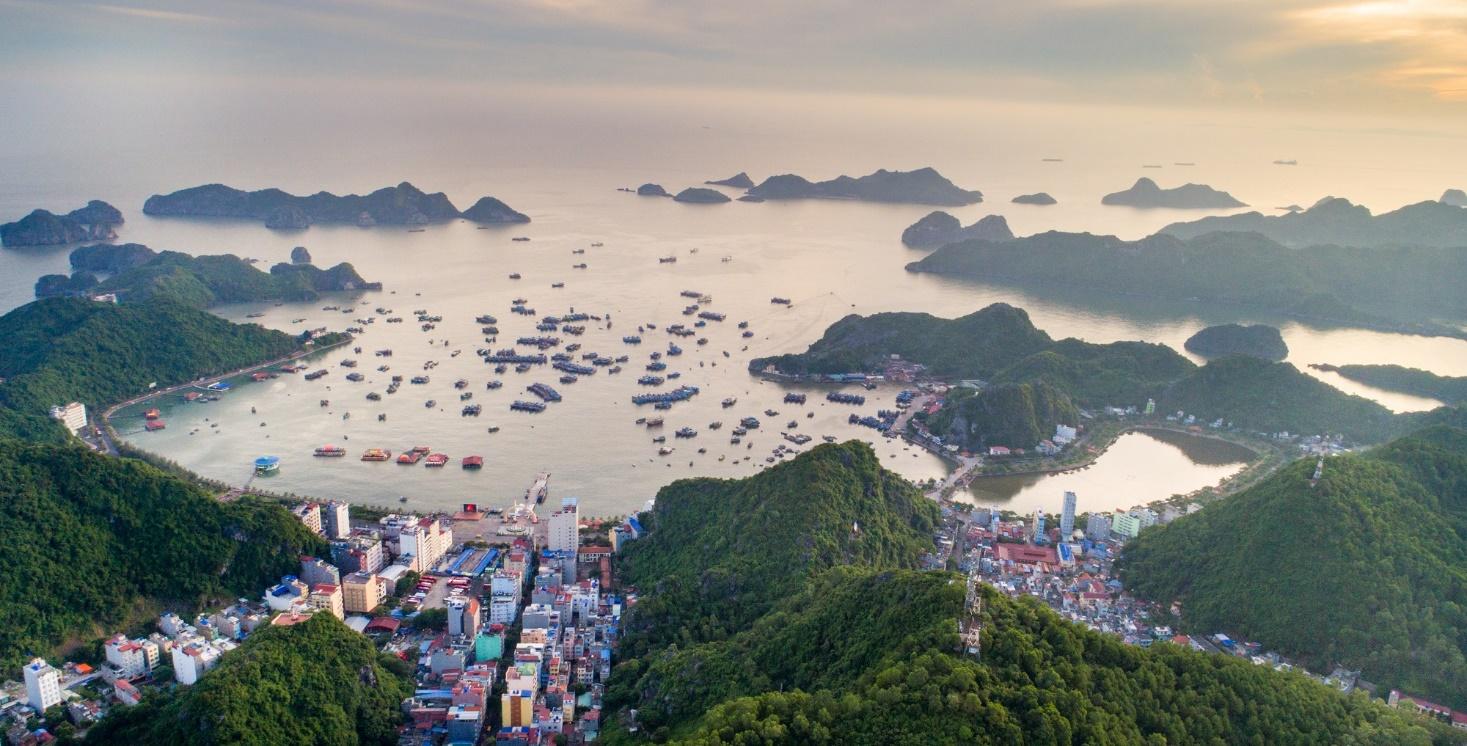
Cat Ba Island aims to become an ecological, zero-emission island.
Can you give more suggestions for Cat Ba?
Mr. Michael van de Watering : There are 8 points in Cat Ba that need to be considered:
The first is “going hand in hand with nature”. This approach focuses on prioritizing environmental friendliness right from innovation in design, planning to construction, more specifically choosing sustainable materials to minimize negative impacts on nature.
Next, it is necessary to "use alternative natural materials" such as industrial by-products or geosynthetic materials to both reduce dependence on finite resources such as sand and limit the negative impacts of sand mining.
The third is "applying green solutions", such as building and renovating land "friendly" to nature. For example, the Polder method - regenerating materials from demolished constructions and testing new sand made from waste for sea encroachment. At the same time, combining coastal area restoration in terms of both landscape and biodiversity.
Fourth, “a thorough assessment of the dynamics and hydrodynamics” is needed to predict changes in flow and sediment transport, to serve the design of projects that ensure that they do not disrupt flow or affect the natural sediment transport process.
Fifth, "monitor and establish an environmental impact assessment program". From there, observe the changes in the coastline and the impact of land reclamation, and closely monitor changes in the ecosystem.
The sixth is "effective water resource management. Lack of water treatment infrastructure means lack of domestic water. Wastewater that is not properly treated will cause pollution.
Seventh, Cat Ba must have a harmonious "marine space planning", closely linked to the natural ecosystem and conservation areas, and clearly define areas that need protection and are at risk of being affected. This approach not only helps manage resources effectively but also prevents the negative impacts of climate change.
Eighth, "applying technology" to improve construction techniques, develop advanced flood prevention systems and infrastructure that can adapt to climate change.
Solving these 8 problems, I believe not only Cat Ba but also Vietnam can completely develop sustainably and achieve ecological balance.
Cat Ba is on track to bring Vietnam to the "net zero" finish line.
Cat Ba’s long-term goal is to become an ecological, zero-emission island. How do you assess the feasibility of this goal? What should be the role of the government, businesses, and community, and what benefits will the people receive?
Mr. Michael van de Watering : With 143 years of experience working in many countries, we believe that the door to becoming an ecological, zero-emission island of Cat Ba is completely open. This archipelago meets all the necessary conditions in terms of both natural foundation and tourism potential.
However, Cat Ba needs to make efforts with the joint efforts of the government, businesses, and community in applying nature-based solutions.
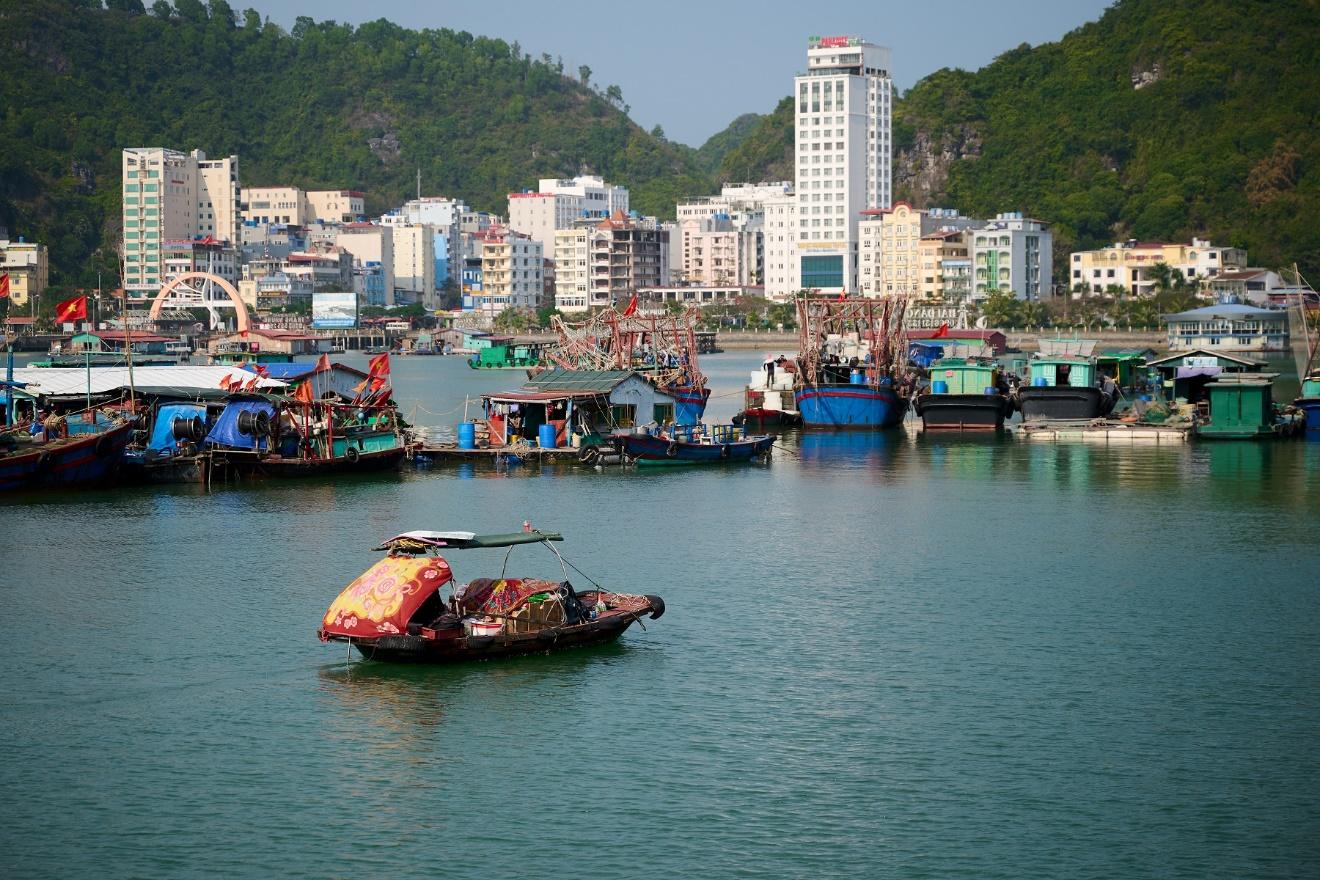
Cat Ba tourism infrastructure needs to be planned in a green, environmentally friendly direction.
Cat Ba can study the following four groups of solutions:
Firstly, regulate and propagate strict regulations on environmental protection; organize education to raise awareness among people and tourists, and collect good initiatives.
Second, infrastructure investment. Increase investment and use of renewable energy such as wind, solar, and tidal energy. In parallel, develop green transport infrastructure such as cable cars and electric vehicle charging stations for traveling on the island. And indispensable is investment in waste and wastewater treatment plants.
Third, prioritize the development of green and ecological tourism. Localities need to create an open mechanism to attract businesses to develop green tourism in order to shape the image of an ecological island. Tourism development creates a "green space" in social security when local people have jobs with stable incomes.
Localities need to preserve and expand green areas such as restoring and protecting forest ecosystems, enhancing marine biodiversity, and creating urban forest spaces to improve air quality and enhance experiences.
Fourth, investment and application of technology - one of the effective tools to support sustainable development. Cat Ba needs to apply advanced technologies such as smart waste treatment; green transportation, advanced aquaculture...
At the same time, we recommend that businesses take the lead in implementing "green" measures; focus on investing in eco-tourism, applying modern technology to reduce carbon emissions from tourism activities. Create conditions to realize "green" initiatives, such as prioritizing the restriction of single-use plastic products, creating a joint model to jointly provide green transportation solutions for tourists such as electric buses, electric taxis or self-driving electric car rental services on the island.
Finally, the community needs to actively participate in protecting and raising environmental awareness, supporting local authorities in developing tourism, infrastructure, and green services. The most practical thing is to minimize the discharge of waste and pollutants into the environment.
Currently, Sungroup Corporation is developing a tourist and commercial service area in Cat Ba Central Bay - a pioneering project aiming for zero carbon emissions and providing many amenities for the community.
Could you share some experiences to successfully develop and replicate the "net zero" model in Vietnam? How to develop Cat Ba into a comprehensive green island?
Mr. Michael van de Watering : I appreciate Sungroup's "boldness" in implementing future projects such as the tourist area and commercial services in Cat Ba central bay.
This is a model developed by many countries and we expect that Vietnam will have more businesses like Sungroup, more sustainable projects towards the goal of "net zero".
We also really like the commitment to nature-based project development approaches and green ideas such as green transport development ideas such as cable cars, electric buses, electric cars, bicycles, etc. that Sungroup has been implementing.
The public electric vehicle system will be planned synchronously across the island, with stops - parking - charging stations... ensuring convenience for residents and tourists.
With the thorough investment of Sungroup, this project is considered one of Vietnam's pioneering tourism projects aiming for zero carbon emissions and dedicating a lot of space to the community.
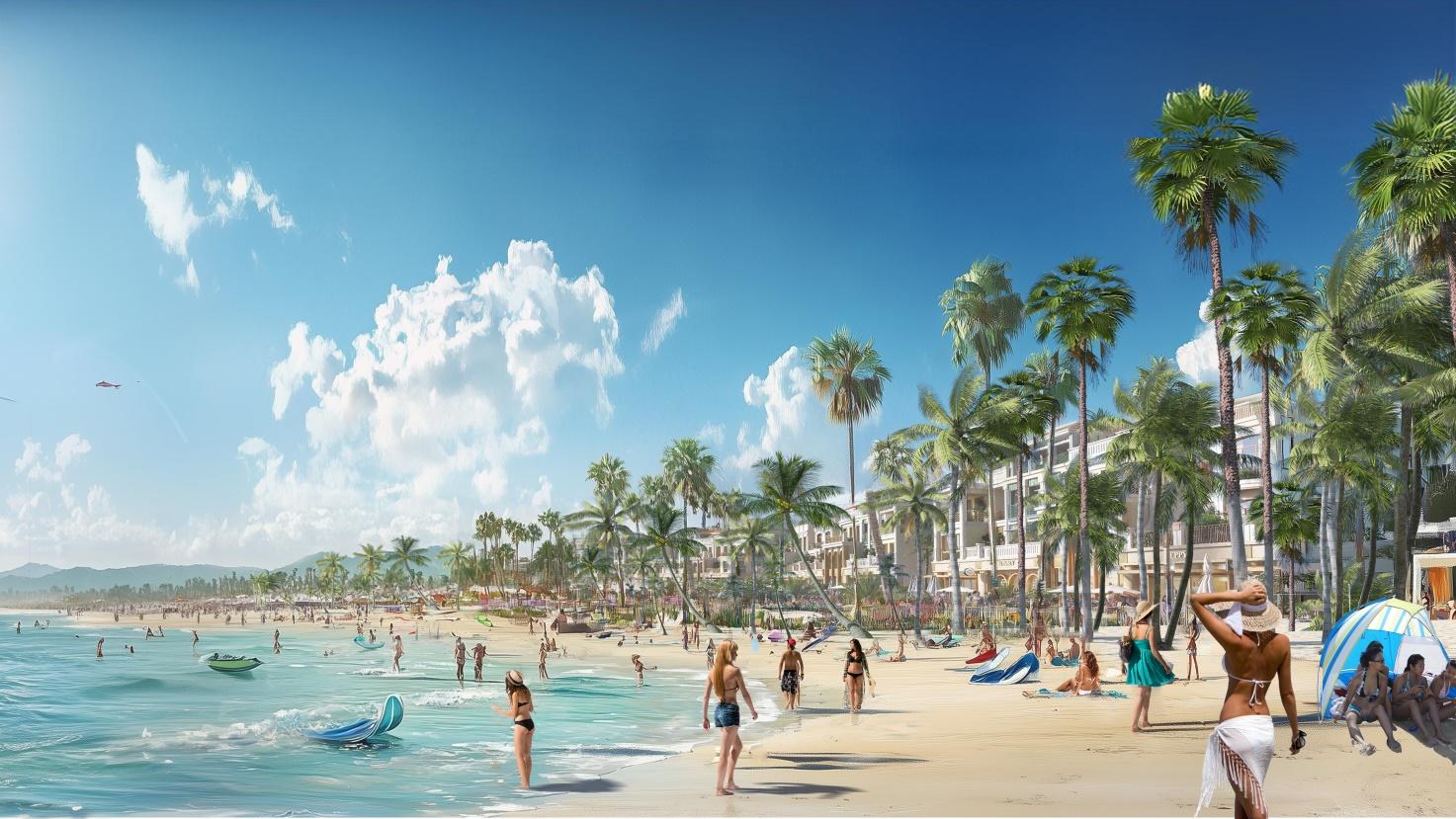
Perspective of artificial beach at Cat Ba central bay tourism and commercial service project.
Returning to the "net zero" story, we have consulted on many projects, typically Pluit City in Jakarta Bay (Indonesia) with the idea of building sustainable urban areas and housing on an area of 160 hectares of two artificial islands in the north of Jakarta.
In Cat Ba, if we want to replicate the ecological, zero-carbon model, policy makers and large enterprises like Sungroup need to have a progressive approach.
We must change our approach right from coastal planning and marine spatial planning.
On the one hand, it is necessary to closely follow the ecosystem, effectively manage resources, study the impacts of climate change to conserve and warn of risks, but on the other hand, it is necessary to have a long-term vision to balance infrastructure investment with environmental sustainability and climate resilience, looking towards the future.
Next, the key factor to create a "green" turning point is technology. From materials, construction technology, energy to transportation, waste treatment... everything must be smart, green, and sustainable.
Ultimately, the key to success is the consensus of all resources from government, businesses to the people. No project can be realized without one of the three "pillars" above.
Solving all of the above propositions, Vietnam can completely develop regional-scale ecological islands, achieving sustainable development and net zero by 2050 as committed at COP26.
Thank you very much!
Source: https://www.baogiaothong.vn/chuyen-gia-quoc-te-chia-se-8-bi-quyet-dua-cat-ba-phat-trien-du-lich-ben-vung-192241216085953664.htm







![[Photo] Prime Minister Pham Minh Chinh and Prime Minister of the Kingdom of Thailand Paetongtarn Shinawatra attend the Vietnam-Thailand Business Forum 2025](https://vphoto.vietnam.vn/thumb/1200x675/vietnam/resource/IMAGE/2025/5/16/1cdfce54d25c48a68ae6fb9204f2171a)


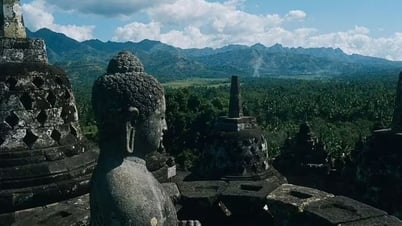



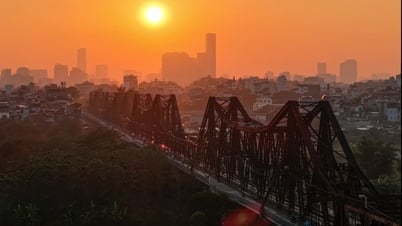

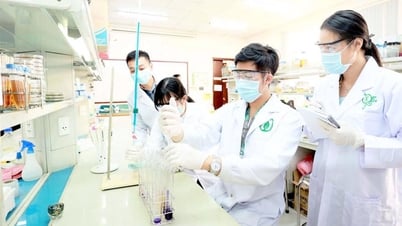

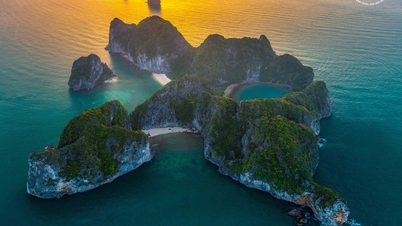


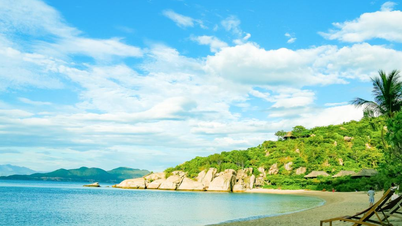
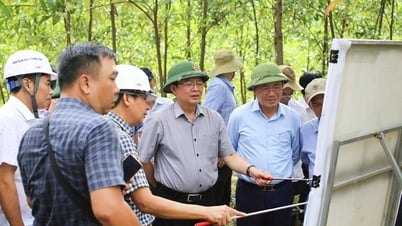
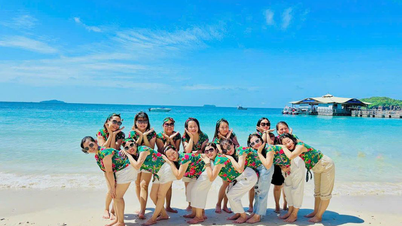
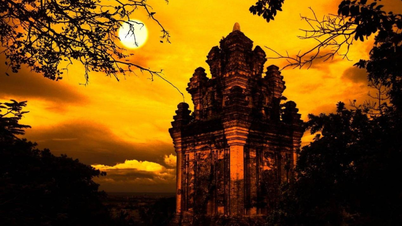
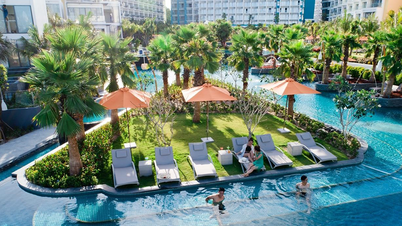





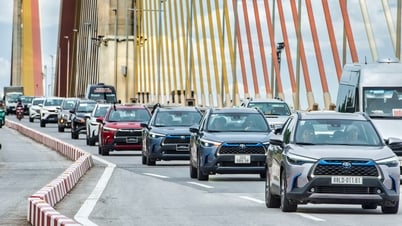




![[Photo] President Luong Cuong receives Prime Minister of the Kingdom of Thailand Paetongtarn Shinawatra](https://vphoto.vietnam.vn/thumb/1200x675/vietnam/resource/IMAGE/2025/5/16/52c73b27198a4e12bd6a903d1c218846)







































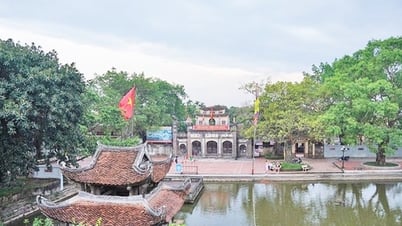



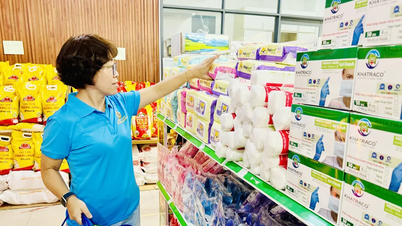


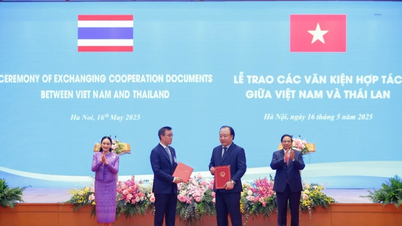

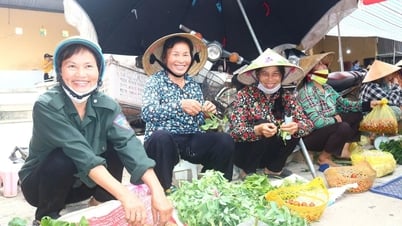










Comment (0)